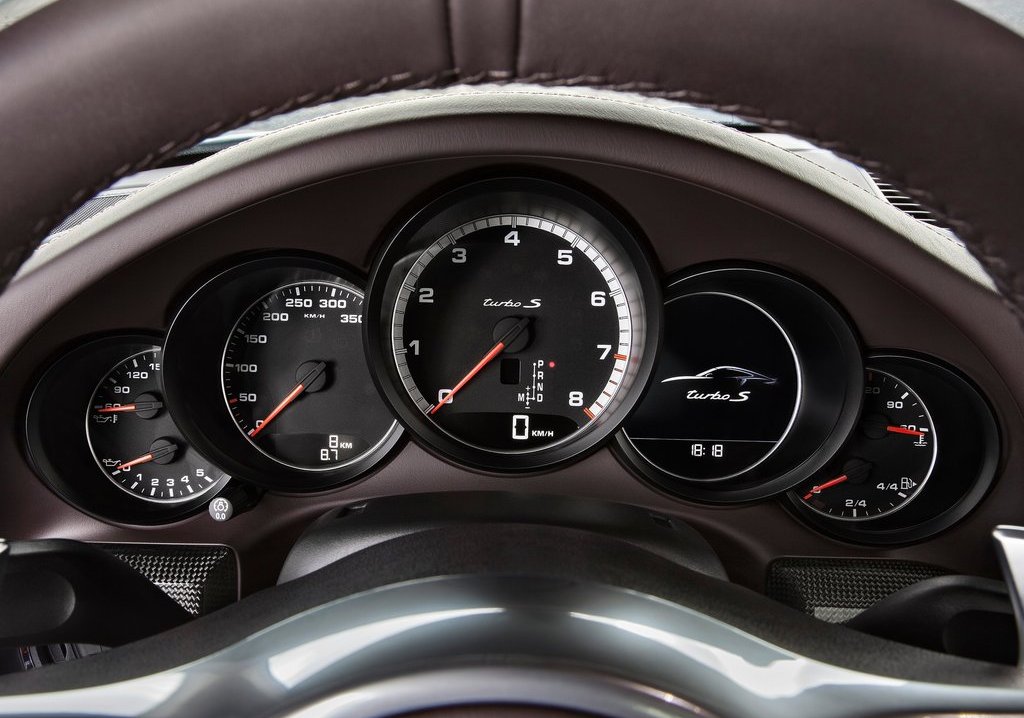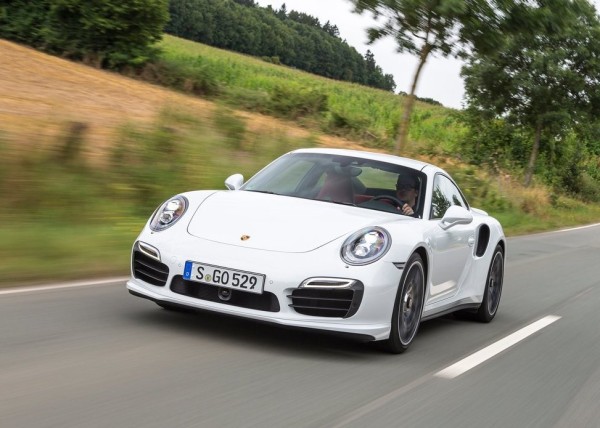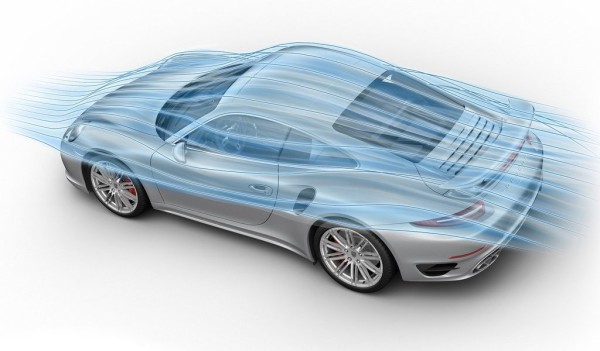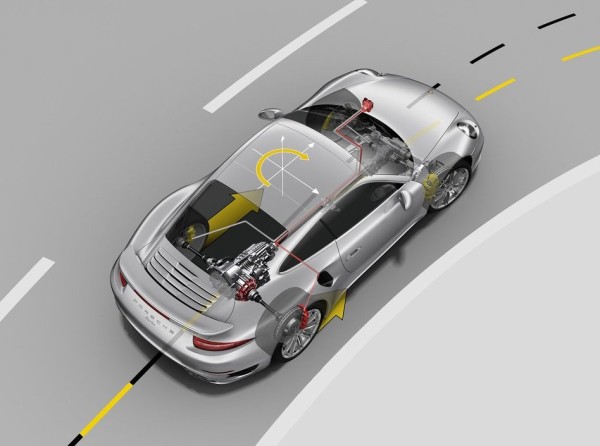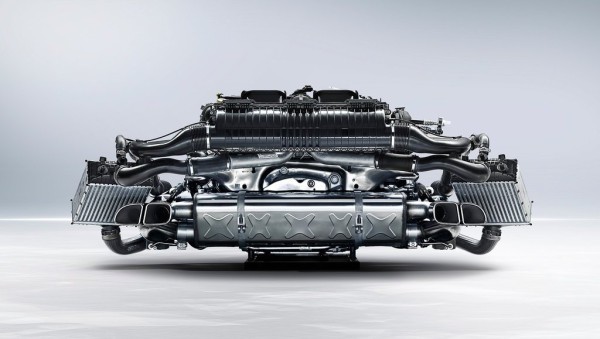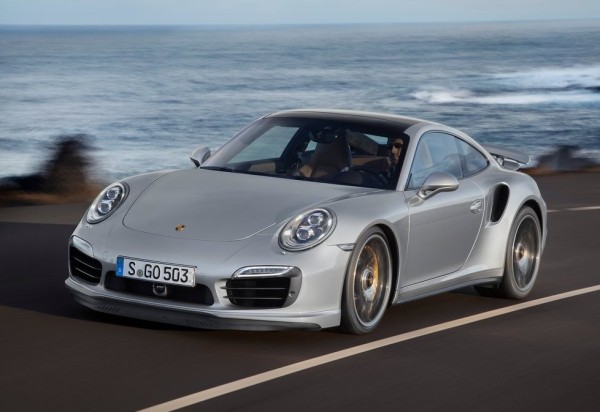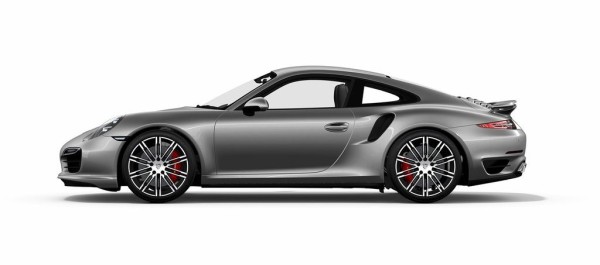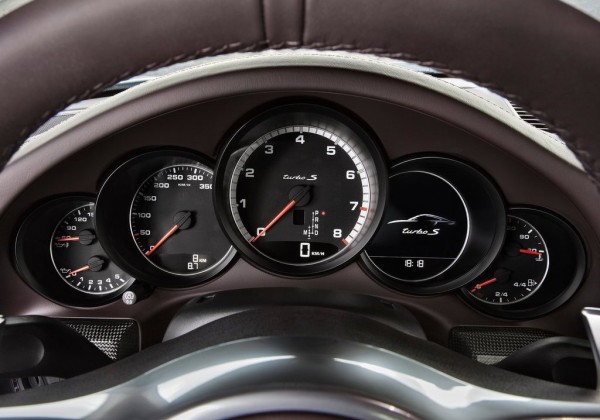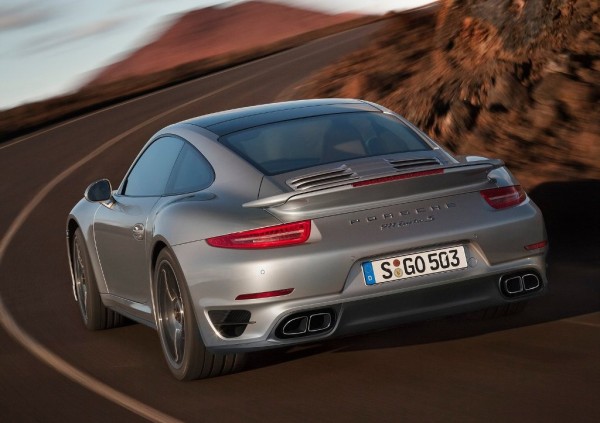For 40 years now, the unique selling point of the 911 Turbo has been the extreme spread of its capabilities that range between dynamic performance and efficiency, between exclusivity and everyday practicality, between tradition and innovation. Advanced development of existing systems and the introduction of new active systems are extending this range in such a way that the 911 Turbo models have now cranked their top values up a notch in all individual disciplines. For example, the lap time of the new Porsche 911 Turbo S at the North Loop of the Nürburgring was reduced to well under 7:30 minutes – naturally with standard production tyres. This advances it into realms of dynamic performance that were previously only attainable by uncompromisingly designed super sports cars.
This new top models of the 911 model series arrive on the market today ready for you to order and spec the Turbo to your desired look. Final priicing is yet to be announced but expect it to be a little past RM1.15million.
Independent, sporty and dynamic
The new 911 Turbo models have an unmistakable and independent look, which makes a clear statement about their special positioning within the 911 series and differentiates them from the competitive field. A key characteristic is the front body with its large cooling air intakes, independent front lights and fins in the lateral cooling air intakes that are all horizontally aligned.
In front, the new Porsche 911 Turbo S is distinguished by additional air scoops in black in the lateral cooling air openings. The front lights in LED technology each consist of a light frame, which is used in the 911 Turbo as a daytime running light and in the S model as a position light, and an integrated direction indicator. The Porsche 911 Turbo S makes its top position clear with standard full-LED headlights that feature four-point daytime running lights, which are available as an option in the 911 Turbo.
However, the special aspect of the new front body is the fact that the front spoiler is fully hidden in its retracted position. This gives the new top 911 a significantly lighter and more elegant frontal appearance. When the front spoiler is extended, however, the car shows its second performance-oriented face, and this is highlighted by the central “turbo” or “turbo S” badge on the lip of the black spoiler.
A focus on the key traits of a 911 Turbo is also apparent in a side view. At a standstill and in urban traffic, there is no spoiler lip to disturb the puristic form of the 911 front line. Clear and unmistakably typical of a Turbo, the air intake for the intercooler opens in front of the rear axle. Forming the visual end point of the so-called “fly line” is the characteristic rear fender, which is integrated more fully in the overall design in the new generation. The new 911 Turbo models give a significantly more dynamic overall appearance in side profile due to a combination of shorter body overhangs, front and rear, and an extended side line with a 100 mm longer wheelbase. Another visual accent is created by the new 20-inch forged aluminium wheels in bi-colour look. In the 911 Turbo, they have ten dual spokes, and in the S model they feature an especially fine structure with a strongly branched spoke design – and a hub lock.
Never before was a 911 more impressive when viewed from the rear. The new 911 Turbo generation has shoulders that are wider than those of any other 911. Above the rear axle, the body is 85 mm wider than at the front axle. The selected style of driving can be discerned from the adaptively adjustable rear wing. Retracted in its sub-shell at moderate speeds, it is extended at top speeds and is also tilted for a greater attack angle when maximum dynamic performance is required. Here, the form of the classic slotted wing was designed with even sharper lines, and together with the narrower wing base and the distinctive rear cover screen the wing is harmoniously integrated into the overall rear body design. The narrow rear lights of the new 911 generation in LED technology visually reinforce the broad shoulders of the new 911 Turbo models by their form and their further outboard mounting positions.
New body with greater rigidity and lower centre of gravity
The body of the new 911 Turbo models is based on the 911 Carrera body structure; as a result, it is based on intelligent lightweight design that utilises aluminium-steel composite construction. Along with extensive use of aluminium and polymer surfaces to reduce vehicle weight, the local use of ultra-high-strength steel offers high body rigidity for ideal occupant protection and excellent dynamic performance. The weight of the body-in-white was reduced 13 per cent compared to the previous models.
This basic concept represents the foundation for the substantial performance gains in the new 911 Turbo generation. Simply lengthening the wheelbase by 100 mm in conjunction with a wider track in front – 51 mm wider in the 911 Turbo and 49 mm wider in the Porsche 911 Turbo S – creates a completely new geometry with greater tracking and roll stability at high speeds on straight-aways and in bends. The lowered centre of gravity improves dynamic performance and agility, and the body’s considerably greater rigidity provides the backbone for the highly precise chassis.
More spontaneous, quicker and more efficient
The entire powertrain of the new 911 Turbo models reflects the typical traits of advanced Porsche development. The turbocharged 3.8-litre six-cylinder with direct petrol injection produces 520 hp (383 kW) in the 911 Turbo and 560 hp (412 kW) in the S model. Porsche continues to be the only carmaker to offer two turbochargers with variable turbine geometry (VTG) in a petrol engine.
Power is transferred exclusively via a seven-speed Doppelkupplung (PDK), which in the top 911 cars now also enables the stop-start function with engine shutoff earlier while coasting to a stop and a separate coasting function. Together with a new thermal management system for the turbo engine, fuel efficiency technologies have reduced NEDC fuel consumption as much as 16 percent to 9.7 l/100 km, a figure that applies to both models.
Compared to previous models, the power level of the 911 Turbo was boosted by 20 hp (15 kW) and its torque was increased ten Newton metres to 660 Nm. In the S model, power was increased 30 hp (22 kW), and torque was increased ten Nm to 710 Nm. The increase in power of the new 911 Turbo was achieved primarily by improving engine efficiency with higher combustion pressures and new valve timing and ignition angle tuning. In the engine of the S model, charge pressure was increased to 1.2 bar to enhance power, and maximum engine speed was increased 200 rpm to 7,200 rpm. This lets the driver utilise an even broader engine speed range, and a higher connected speed with stronger drive torque at full load acceleration after a gear-shifting operation.
Overboost: power is boosted at the press of a button
The new sports cars perform even better in a sprint with the Sport Chrono package, which is standard equipment in the Porsche 911 Turbo S (optional in the 911 Turbo); for one, it offers increased torque. The “Overboost” function, which is being used in the Porsche 911 Turbo S for the first time, increases maximum charge pressure by around 0.15 bar for up to 20 seconds in the middle speed range; this increases maximum torque to 750 Nm. The pistons were reinforced and modified to ensure that the new 911 Turbo engines can withstand the higher loads associated with their higher power and torque values. Peak pressures were increased over ten per cent, and internal efficiency was significantly improved.
PDK with virtual intermediate gears
The achieved performance gains and reduced fuel consumption in the new top 911 cars is in part due to the further developed PDK Doppelkupplung which features new functions optimised for sporty driving.
For example, Porsche engineers supplemented the seven driving gears by adding virtual intermediate gears that further improve fuel economy and comfort. They are used to reduce engine speed during an undisturbed, constant-speed mode of driving, when the next higher gear would reduce engine speed below the specified lower speed limit. To do this, the transmission controller engages adjacent gear levels and controls the two clutches for defined slip in transferring the drive power. When the driver presses the accelerator pedal, the Doppelkupplung downshifts to the suitable gear with lightning speed. Since the PDK has oil-bath clutches, this innovative transmission function is wear-free.
Furthermore, the PDK’s extended stop-start functionality now shuts off the engine while coasting to a stop, which saves more fuel. Both Turbo models also offer a coasting function that disengages the clutches in coasting phases, runs the engine at idle, and coasts the vehicle in neutral. This function can significantly improve fuel economy, especially on trips on motorways.
The dynamic engine speed adjustment feature delivers even quicker gear changes in both downshifts and upshifts. During downshifts, the controller outputs intermediate acceleration pulses which are relatively comfort-oriented in the base setting and very dynamic in the SPORT or SPORT PLUS modes. During upshifts, engine speed adjustment functionality utilises masking of engine injection in the SPORT modes. Both of these effects make gear shifts more acoustically impressive as well.
New all-wheel drive system with electro-hydraulic control
For even quicker and more specific power distribution to the two axles, Porsche developed its currently used all-wheel drive system (PTM) with electro-hydraulic control of its multi-plate coupling. This functional principle enables faster and more precise control of the coupling. The result is more dynamic and more precise control of drive forces to the front axle with benefits in traction and vehicle dynamics. In addition, the new system can now direct more drive torque to the front axle, whose transfer case was provided with a new water cooling system. At the same time, the optimised interaction of engine, transmission and all-wheel drive system improves sprinting capabilities of the new top 911 cars even more. With the optional Sport Chrono package, the 911 Turbo accelerates from zero to 100 km/h in 3.2 seconds, which is one-tenth of a second faster than the previous Turbo. Its successor now covers the standard acceleration distance in 3.1 seconds.
New vehicle dynamic limits
The top models of the 911 series have made their most impressive development leap in vehicle dynamics. Simply lengthening the wheelbase by 100 mm in conjunction with an increased front track width – it is 51 mm wider in the 911 Turbo and 49 mm wider in the Porsche 911 Turbo S – and a 42 mm wider rear track have created a completely new geometry with greater tracking and roll stability at high speeds on straight-aways and in bends.
Building upon this foundation, the intelligent interplay of active systems continually adapts driving properties to the driving situation better than ever. In particular, the new active rear axle steering, active aerodynamics and Porsche Torque Vectoring (PTV) Plus represent systems that considerably improve the car’s spread of driving capabilities. The Porsche 911 Turbo S claims the top position with an ample range of standard equipment. It also has the PDCC roll stabilisation system, PCCB ceramic brake system and dynamic engine mounts that are included in the Sport Chrono package. These systems may be ordered as options for the 911 Turbo.
Rear axle steering improves agility and stability simultaneously
Active rear axle steering consists of two electromechanical actuators, which are used on the left and right of the rear axle instead of the conventional track steering units. The steering angle of the rear wheels may be varied as a function of vehicle speed: by up to 2.8 degrees in a direction opposite to that of the front axle’s steering angle or up to 1.5 degrees in the same direction as front wheel steering. By comparison: A steering angle of 2.8 degrees at the wheels of the front axle is equivalent to a steering angle of around 45 degrees on the steering wheel from the centre position.
Two effects can be achieved by varying the directions in which the two axles are turned. When the front and rear wheels are steered in opposite directions, the sports car drives like a model with a significantly shorter wheelbase. Exhibiting astonishing manoeuvrability, it steers and handles with better agility in bends. The system sets this functionality at speeds below 50 km/h, which also makes manoeuvring and parking noticeably easier in everyday driving. At 10.6 metres, the new 911 Turbo models have the smallest turning circle of the entire competitive field.
The second type of effect is achieved when the front and rear wheels are turned in the same direction: This lengthens the perceived wheelbase of the sports car. For the driver this means greater stability in lane changes and more driving stability, especially at high speeds. Even more: The build-up of lateral forces at the rear axle initiated in response to the driver’s steering input occurs much quicker than with an unsteered rear axle, and this leads to a more spontaneous and harmonious initiation of changes in direction. Steering both axles in the same direction is performed starting at a vehicle speed of 80 km/h. The high lateral force potential at the rear axle also permitted a steering ratio that is ten per cent more direct. Overall, this makes the new 911 Turbo perceptibly more agile.
In offering this variability, rear axle steering makes a significant contribution towards resolving the conflict in goals between agility and driving stability. The result not only offers benefits in manoeuvrability, driving safety and everyday utility; it also increases driving performance. Rear axle steering has played a decisive role in further improving lap times at the Nürburgring as well.
More traction coming out of a bend: PTV Plus
Active rear axle steering may be supplemented by Porsche Torque Vectoring Plus, depending on the driving situation. The system consists of an electronically controlled, fully variable rear differential lock, and specific, individual brake interventions are made at the right or left rear wheel on road surfaces with low grip. When steering into a bend, the system slightly brakes the rear wheel at the inside of the bend. This gives the rear wheel at the outside of the bend greater drive power which adds a turning impulse in the steered direction. The result is direct and dynamic steering into the bend. In this way, PTV Plus significantly improves agility and steering precision at low to moderate vehicle speeds. At high speeds and when accelerating out of bends, the rear differential lock goes into action and also delivers greater driving stability.
PDCC: through a bend with practically zero side tilt
Another active vehicle dynamic system, which has now made its way into the 911 Turbo models and is standard equipment in the S model, is Porsche Dynamic Chassis Control (PDCC).
This variable stabiliser system essentially resolves the conflict between extreme sportiness with the lowest possible roll angle in dynamic driving situations and a high level of comfort by substantially decoupling the stabiliser in straight-line driving and implementing opposing suspension spring deflections on uneven roadways. In this way, the Porsche 911 Turbo S makes another substantial contribution towards improving transverse acceleration and handling, since it compensates nearly completely for lateral vehicle tilt up to the car’s maximum transverse acceleration value. The reduced roll angles maintain optimal tyre contact to the road surface so that they can transfer higher lateral forces. This increases the possible speeds through bends, which in turn results in faster lap times on race courses. The system also provides more direct steering feedback and better steering precision. When the SPORT Plus mode is activated, the PDCC system also reacts more powerfully.
Dynamic engine mounts prevent undesirable engine surges
Porsche is implementing another active system for improving vehicle dynamics in the new 911 Turbo S: dynamic engine mounts, which are components of the standard Sport Chrono package. Their controller uses existing sensors to detect a very sporty mode of driving, then stiffens the normally elastic engine mounts. This is done by using a liquid with a suspension of magnetic particles in the mounts; its viscosity can be varied by an electric field. Damping of the mounts may be increased as a function of the switch setting – SPORT or SPORT Plus – and a control strategy configured with greater stiffness for a circuit course is preselected.
Large wheels with larger contact surfaces
The package of design actions for further optimised vehicle dynamics is rounded out by entirely new wheels. Compared to the 19-inch wheels of the previous model, the current 20-inch wheels are not only larger; on the Porsche 911 Turbo S the front and rear wheels are also one-half inch wider. The front tyres are also wider. So, the new 911 Turbo models ride on tyres that make an impression in terms of vehicle dynamics due to their larger road contact surfaces. The new top sports cars get a new generation of tyres that were specially optimised for low rolling resistance, typical Porsche performance, short braking distances and weight. As previously, the wheels of the Porsche 911 Turbo S have a hub lock, whose mode of operation was further optimised.
Playing with the wind
The new Porsche 911 Turbo is the world’s first sports car to feature adaptive aerodynamics. As a result, it attains an entirely new bandwidth of everyday utility, efficiency and performance, setting best values in each of these three disciplines.
Porsche Active Aerodynamics (PAA) breaks down the barriers that limit conventional sports cars. Without active components, aerodynamic tuning always represents a compromise – primarily between efficiency and circuit racing performance. Based on a unique combination of a front spoiler that can be extended in multiple stages and a rear slotted wing that is adjustable in height and attack angle, the 911 Turbo on the other hand can adapt its aerodynamic shape to the current situation and to customer wishes at the press of a button. It is the first vehicle that can switch back and forth between different aerodynamic modes while preserving the balance of aerodynamic lift between the front and rear axles.
PAA controls the front spoiler and rear wing in three basic modes. At the start, both are fully retracted. When the front spoiler is folded back, this enables a significantly larger approach angle than in the previous model. It is now 10.3 degrees instead of 7.8 degrees, and ground clearance is now 156 mm instead of 139 mm. This drastically minimises the risk of getting “hung up” on steep ramps of parking structures or on kerbs.
PAA stays in this mode up to a vehicle speed of 120 km/h, unless the driver manually intervenes and activates the aerodynamic or SPORT Plus button. Then the Speed mode is initiated, in which the two outer segments of the three-part front spoiler are extended. This diverts more air around the body, which reduces aerodynamic lift at the front axle. At the same time, the rear wing is extended 25 mm upwards. In this configuration, the total air drag of the new 911 Turbo is very low; this improves fuel economy and the sports car reaches its maximum speed 315 km/h or 318 km/h in the S model. When the car’s speed drops below 80 km/h, PAA automatically switches back to the base setting.
“Performance’: an entirely new aerodynamic dimension in the 911 Turbo
The “Performance” mode adds an entirely new aerodynamic dimension to the top 911. The forces generated by air flow illustrate this quite well: At 300 km/h in Performance mode the sports car generates 132 kg of downforce. This means that the maximum possible transverse acceleration grows by ten per cent at this speed – just as a result of downforces.
To generate these forces, the middle section of the front spoiler is also extended. The air is diverted even more around the vehicle, and a low pressure zone is created behind the spoiler. Simultaneously, the rear wing is extended to a height of 75 mm and is angled forward seven degrees.
The aerodynamic bandwidth of the new 911 Turbo effortlessly reaches performance zones that were previously reserved for GT sports cars by Porsche. Just switching from the “Speed” mode to the “Performance” mode improves the vehicle dynamics potential of the new 911 Turbo to such an extent that it shortens the lap time on the North Loop of the Nürburgring by two seconds.
Driving fun in an exclusive ambience
The interior was completely redesigned in both 911 Turbo models, and it is based on the interior design of the 911 Carrera family. Above all, it was tailored to convey intensive and unadulterated driving fun of the high-performance sports car to the driver, to support the driver and to offer the driver and passengers the exclusive high-end ambience of a leather interior.
The new 911 Turbo models also make their appearance with a more intensive acoustic experience. Ensuring an especially emotional driving experience is the standard Sound Symposer, which transmits air induction sounds of the turbo engine to the interior via a diaphragm. The purely mechanical system is activated by pressing the SPORT button.
The driver and front passenger in the Porsche 911 Turbo sit on sport seats with fully electric 14-way adjustment, which in addition to its basic adjustments also offers such electrical adjustments as seat tilt, seat depth and a four-way lumbar support. The S model has the standard Adaptive Sport Seats Plus with 18-way adjustment. These seats have prominent side support panels and an adjustment of the side supports to the seat cushion and the backrest for optimal lateral support in every driving situation. Both versions include the Memory package and electric steering column adjustment. The Memory package stores a large number of seat, steering column and vehicle settings.
Along with the extensive package of standard features in the new 911 Turbo, the new Porsche 911 Turbo S has the bi-colour leather interior in black and carrera red exclusively offered for this model as standard. In addition, the backrest shells of the seats are leather trimmed with double cap seams, and the decorative gearshift and door panels and the centre console are executed in Carbon look.
Instrument cluster has extended set of displays
The driver steers both models with a sport design steering wheel with aluminium shift paddles. The instrument cluster of the new 911 Turbo models was further developed based on the current 911 generation and therefore also has a colour display to the right of the tachometer. The instrument cluster itself differs from that of the 911 Carrera models by its entirely black dials with aluminium-coloured outer rings and its tachometer with a silver-coloured decorative ring and illuminated “turbo” or “turbo S” logo. The 4.6-inch, high-resolution colour display offers extensive display options including charge pressure and performance data. The new “Performance” display shows the momentary available engine torque by a moving dot on the screen; this value is a function of engine speed and load. In addition, the main beam assistant for the LED headlights (standard in Porsche 911 Turbo S, optional in 911 Turbo) can be activated or deactivated from a submenu of vehicle settings.
As in the previous models, here too the new 911 Turbo models include Porsche Communication Management (PCM) with navigation module as standard. This latest PCM generation offers such features as a universal audio interface, three-dimensional navigation map including City and Terrain models with overlaid satellite map, map-based speed limit display and controls for the standard Bose Surround Sound system. The high-performance system has a total of twelve loudspeakers including a 100 Watt active subwoofer with Class-D amplifier integrated in the body-in-white as well as eight amplifier channels that create an impressive sound experience.
Full-LED headlights with continuous levelling adjustment
Porsche offers a number of highly developed systems and features for the new 911 Turbo models, some of which are standard in the S model. For example, the new top sports car can be made out by its factory-installed full-LED headlights.
They differ significantly from the bi-xenon system of the 911 Turbo, for which the LED system is offered as an option. They offer fatigue-free driving with their LED light colour that is very similar to daylight and enhances perception of contrasts. Integrated in the headlight housing is a four-point daytime running light, which is a highly attractive, brand-typical trademark.
Instead of a spherically shaped light housing with a round projection lens, the headlights have two tube-shaped light housings arranged on levels with upper and lower cut lens contours. The base module in the upper tube is part of the dipped beam light, and it illuminates the roadway with a broad and uniform swath of light. The second part of the dipped beam light is in the module of the Porsche Dynamic Light Systems (PDLS) located beneath the first. It has a swivelling function and variable light distribution for such functionalities as dynamic cornering, country road, motorway and main beam lights. The auxiliary main beam light in the upper section of the full-LED headlight consists of two sub-components to the left and right of the base module. Its high position offers even better illumination of the roadway. Each daytime running light consists of four LED spots surrounded by a light ring.
In combination with the full-LED headlights, the Porsche Dynamic Light system was extended to include a dynamic main beam, so it is known as PDLS plus. In contrast to systems that only switch digitally between dipped beam and main beam, here the lighting range, including that of the auxiliary main beam, is continually adjusted. The dynamic main beam light system detects light sources of oncoming vehicles and traffic ahead via a camera mounted inside of the car. The advantage of this system is consistent use of the lighting potential without causing glare to others in traffic.
Camera-based assistance for parking and road sign recognition
For the first time in the new 911 Turbo models, and exclusively for Porsche sports cars, the Park Assistant option, front and rear with reversing camera will be offered at the end of this year. Along with ultrasonic sensors in the front and rear body trim, this option also utilises a camera above the rear licence plate; its images are displayed on the PCM monitor, and its control module generates additional lines that the driver can have shown for orientation purposes. They show the driving path based on the current steering angle. In addition, a transparent, rectangular colour area in the monitor symbolises the vehicle’s parking zone, which offers additional support in parking. Moreover, the image output of the reversing camera may be combined with the top view of the Park Assistant.
Another camera-based option is road sign recognition. This information system uses a camera to detect speed limit signs, no overtaking zones and the ends of these zones. It also considers supplemental signs. If the camera unit does not recognise a character, the speed limit stored in the navigation system is automatically displayed.
Innovative adaptive cruise control, Burmester sound system
The adaptive cruise control system with Porsche Active Safe (PAS) also offers up new auxiliary functions. New here is the additional integration of the auto stop-start function. In the new 911 Turbo models, the system offers the opportunity to automatically shut off the engine after slowing the vehicle to a stop. The engine is restarted automatically when the driver presses the accelerator pedal or initiates it from the ACC steering column stalk.
As in the 911 Carrera models, the Burmester® High-End Surround Sound system is being offered as an option in the new 911 Turbo and 911 Turbo S. Based on experience gained from the many award-wining systems from the Panamera and Cayenne, this system offers an output power and sound quality that has never before been heard in the sports car segment. Its performance data bear this out impressively in figures: twelve individually driven loudspeakers, including an active body-in-white subwoofer with a 140 mm diameter diaphragm and integrated 300-Watt Class-D amplifier, 16 amplifier channels and a total system power of 821 Watts.

